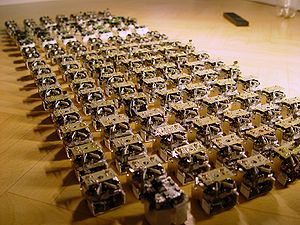
How are robots most useful in a classroom setting?
The idea of having a robot as a classmate or a learning tool in the classroom is no longer just a psy-fi fantasy- today’s robots are already appearing in schools. The question that remains is, how are robots most useful in a classroom setting. It is this type of question that led to a recent study by Latitude Research in cooperation with Lego, studying the way children interact with robots in school. But perhaps more important then the robots themselves, the goal of their research was to learn more about the aspirations and even the frustrations that kids have in the learning process.
The advantage of children interacting with robots as part of the learning process is a combination of the nature of the robot, and the way the child sees it. The robot doesn’t judge a wrong answer or line of thinking, it only seeks to help the student find answers. The student, meanwhile, see’s the robot very much as a human (2/3 of kids in the study saw them as good friends), except this human friend does not intimidate them, this human helps them reach the information they need and then present it to the teacher proudly. This point is perhaps an old idea but its proven true in the course of the Robots @ School research- children interact well with robots and the result is a positive learning experience with less moments of psychological or emotional setbacks that we know can take place in a traditional classroom. Beyond that, the use of robots to help with school work is seen by kids as something fun, illustrating how the blurring of work and fun is a beneficial occurrence.
Of course, despite the good news for education, some quotes from the children might still scare a lot of adults and educators. For example:
Bookmark this page for “robots in the classroom” and check back regularly as these articles update on a frequent basis. The view is set to “news”. Try clicking on “video” and “2” for more articles.







